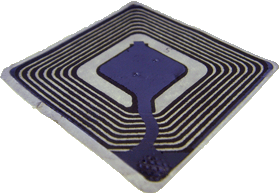
The supply chain contains all the parties involved in the designing, production, promotion, marketing, delivering, and supporting of each component in a product or service. Supply chain management is the management of the combination of the supply management and logistics across the supply chain, and the goal is to achieve either a higher-quality product or a lower-cost of producing the product. The supply chain process is shown below.

Value creation has come from businesses seeing that they can be more productive and profitable by involving the suppliers in some of the decision-making involved in the business. This has also lead to many companies switching from the hierarchical business model to the network model since they are reaching more than just their own organization. Suppliers can be categorized in one of three tiers, which increase in number the higher the tier. The tiers are as follows: a business has a small number of suppliers they use, which develop relations with a larger pool of suppliers (tier-one), which in turn have an even larger pool of suppliers (tier-two) who work with their own suppliers (tier-three). As you can see, there has to be a level of trust with each level of suppliers or there will be a problem. This trust allows for participants in a supply alliance to exchange information otherwise withheld from other companies.
The Internet has allowed for this exchange of information to be easier and much quicker than it would be to do such by other means. The only disadvantage found in using this technology is the cost, but the advantages generally offset the cost. Those advantages include:
- Sharing changes in customer demand.
- Recieving quick notification of changes in product design.
- More efficient means of providing product specifications and designs.
- Increase transaction processing.
- Reduce transaction handling cost.
- Reduce transaction data errors.
- Share defective product rates and types of defects.
The integration of EDI and bar coding is very noticable in businesses today, from shipping labels to RFID chips, like the one shown below. These allow for companies to perform many tasks that can be streamlined. Some of the aspects of bar codes and RFID are listed below.
| Bar Codes | RFID |
|---|---|
| Slower and less accurately read. | Can be scanned quicker and more accurately. |
| Must be visible to be scanned. | Can be placed anywhere on or in the item and are readable even when covered. |
| Scanner must be placed within a few inches of the code. | Can be read from within 6 feet away. |
One of the biggest developments in material-tracking technology has been the use of the passive RFID tag. This does not require a power souce, but rather extracts power from a radio signal to send back data including inventory information for that item.

Creating Ultimate Consumer Orientation
As we have learned, the main goal of any business process should be to meet the needs of the consumer. However, when the supply chain of a company is very long, the company tends to lose sight of this, and as a result often miss opportunities to further increase profitability and productivity in the supply chain.
Internet technologies are a low-cost, high-efficient means of communications that have allowed businesses to improve upon many of the relationships involved in the supply chain.
As has already been mentioned, one of the biggest issues when talking about the supply chain is trust. Internet technologies have helped the trust factor of supply chain management. Also, companies can use the Internet to build the trust of the consumer by providing information to the consumer such as customer reviews/testimonials about the company as well as support for the product or service as needed.
However, there are times that companies use Internet technologies in ways that are less than respectable, which is covered in the "Ethics" portion of the site.